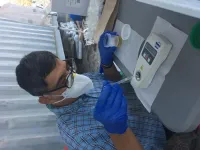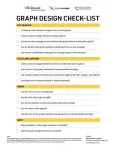(Press-News.org) Alexandria, VA, USA – A study aiming to use AI and predictive models to forecast the likelihood of permanent tooth loss, as an indicator of overall oral health, based on various behavioral and lifestyle factors was presented at the 102nd General Session of the IADR, which was held in conjunction with the 53rd Annual Meeting of the American Association for Dental, Oral, and Craniofacial Research and the 48th Annual Meeting of the Canadian Association for Dental Research, on March 13-16, 2024, in New Orleans, LA, USA.
The abstract, “Artificial Intelligence Algorithms for Understanding the Determinants of Oral Health” was presented during the “Artificial Intelligence and Machine Learning Applications in Oral Health” Oral Session that took place on Thursday, March 14, 2024 at 8 a.m. Central Standard Time (UTC-6).
The study, by Seyedmisagh Imani of Marquette University School of Dentistry, Milwaukee, WI, USA, used data on the Behavioral Risk Factors obtained from the Center for Disease Control’s 2022 Behavioral Risk Factor Surveillance System (BRFSS). Different factors from a diverse group of respondents were collected, including age, gender, education, income, smoking history, chewing tobacco use, e-cigarette use, alcohol consumption, physical activity, sleep patterns, general health status, and dental care visits. After cleaning and refining the dataset, a total of 293,398 individuals were evaluated. Five different machine-learning techniques were employed to predict tooth loss, including K-nearest neighbor, logistic regression, decision trees, random forests, and extreme gradient boosting trees.
Findings showed that although age and routine dental care were the strongest predictors for tooth loss, socioeconomic conditions also played a significant role, indicating their importance in predicting this condition. Indeed, models incorporating socioeconomic characteristics outperformed those relying solely on clinical dental indicators. The best performing machine-learning algorithm was the extreme gradient boosting trees which exhibited the highest predictive performance in determining tooth loss (AUC = 81.2%). This study highlights the ability of machine-learning algorithms in predicting tooth loss risk based on Behavioral Risk Factors.
The findings suggest that incorporating socioeconomic factors into predictive models can enhance their accuracy and effectiveness. These models have the potential to find practical application in clinical settings for identifying individuals at risk of tooth loss, enabling healthcare professionals to prioritize preventive interventions.
About IADR
The International Association for Dental, Oral, and Craniofacial Research (IADR) is a nonprofit organization with a mission to drive dental, oral, and craniofacial research for health and well-being worldwide. IADR represents the individual scientists, clinician-scientists, dental professionals, and students based in academic, government, non-profit, and private-sector institutions who share our mission. Learn more at www.iadr.org.
About AADOCR
The American Association for Dental, Oral, and Craniofacial Research (AADOCR) is a nonprofit organization with a mission to drive dental, oral, and craniofacial research to advance health and well-being. AADOCR represents the individual scientists, clinician-scientists, dental professionals, and students based in academic, government, non-profit, and private-sector institutions who share our mission. AADOCR is the largest division of IADR. Learn more at www.aadocr.org.
END
Artificial intelligence algorithms for understanding the determinants of oral health
2024-03-19
ELSE PRESS RELEASES FROM THIS DATE:
Predicting oral cancer-related mortality among adults using machine learning approach
2024-03-19
Alexandria, VA, USA – A study aiming to predict oral cancer-related mortality among adults in the United States and identify the predictors of oral cancer-related mortality using the Machine Learning Approach. was presented at the 102nd General Session of the IADR, which was held in conjunction with the 53rd Annual Meeting of the American Association for Dental, Oral, and Craniofacial Research and the 48th Annual Meeting of the Canadian Association for Dental Research, on March 13-16, 2024, in New Orleans, LA, USA.
The abstract, “Predicting Oral Cancer-Related Mortality among Adults Using Machine Learning Approach” was presented ...
Harnessing biomaterial-based FTY720 immunotherapy to accelerate oral wound healing
2024-03-19
Alexandria, VA, USA – A study aiming to deliver Fingolimod (FTY720) loaded polymer scaffolds to enhance oral wound healing by modulating pro-regenerative immune cell migration associated with improved vascularization and tissue remodeling was presented at the 102nd General Session of the IADR, which was held in conjunction with the 53rd Annual Meeting of the American Association for Dental, Oral, and Craniofacial Research and the 48th Annual Meeting of the Canadian Association for Dental Research, on March 13-16, 2024, in New Orleans, LA, USA.
The abstract, “Harnessing Biomaterial-Based ...
Oral health behaviors associated with mental health disorders
2024-03-19
Alexandria, VA, USA – A study aiming to examine oral hygiene self-care behavior among patients with self-reported mental health disorders was presented at the 102nd General Session of the IADR, which was held in conjunction with the 53rd Annual Meeting of the American Association for Dental, Oral, and Craniofacial Research and the 48th Annual Meeting of the Canadian Association for Dental Research, on March 13-16, 2024, in New Orleans, LA, USA.
The abstract, “Oral Health Behaviors Associated with Mental Health Disorders” was presented during the ...
Researchers develop deep learning model to predict breast cancer
2024-03-19
OAK BROOK, Ill. – Researchers have developed a new, interpretable artificial intelligence (AI) model to predict 5-year breast cancer risk from mammograms, according to a new study published today in Radiology, a journal of the Radiological Society of North America (RSNA).
One in 8 women, or approximately 13% of the female population in the U.S., will develop invasive breast cancer in their lifetime and 1 in 39 women (3%) will die from the disease, according to the American Cancer Society. Breast ...
Social activities can prevent cognitive decline in care facility residents
2024-03-19
Social activities such as interactions with others and participation in organised events can prevent cognitive decline in long-term care facility. Research from Amsterdam UMC, carried out among 3600 patients in 42 Dutch and Belgian care homes, shows that participation in social activities offers a protective effect for those with no, or little, cognitive impairment. These results are published today in the Journal of Alzheimer's Disease.
"Cognitive decline in long-term care residents is relatively common, a Canadian study showed that almost a quarter of residents cognitively declined after a year of residency," ...
BU study finds coping is related to longevity in older men
2024-03-19
(Boston)—Coping is defined as cognitive and behavioral efforts to manage stressors that people believe exceed their ability and resources to respond to effectively. While previous research has linked stressor characteristics, such as the type of event and its duration, and how stressed people feel in response to them, to higher mortality risk, far fewer studies have considered the long-term health consequences of how we manage stressors (coping) in large-scale studies.
In a new study from ...
MRI and lumbar puncture not necessarily required to manage CAR T-cell therapy complications
2024-03-19
(WASHINGTON, March 19, 2024) – Magnetic resonance imaging (MRI) and lumbar puncture (LP) may not always be necessary for diagnosing and managing a serious neurological complication associated with CAR T-cell therapy, according to a new Blood Advances study. Findings further validated the use of the electroencephalogram (EEG) – a noninvasive test measuring electrical activity in the brain – in managing this neurotoxicity.
“When treating patients for CAR T-cell associated toxicities, we typically follow pretty ...
Empty “backpacks” activate the immune system against cancer
2024-03-19
Most of the white blood cells in your body are a type of cell called neutrophils. Despite their high numbers, they are less well understood than other immune cells, in part because they have very short lifespans: an average neutrophil lives for only eight hours. However, recent work has shown that neutrophils are very flexible cells, capable of dialing inflammation up or down, especially in the context of cancer. This makes them attractive targets for immunotherapy, which aims to tweak the immune system to more potently attack disease. But neutrophil-based ...
Dehydration is rampant among Florida farm workers, new study shows
2024-03-19
Nearly all farm workers who participated in a recent study in Florida were dehydrated at the end of their shifts, and more than half were still dehydrated the following morning.
The study, a partnership between the University of Illinois Chicago and the Farmworker Association of Florida, used urine samples collected first thing in the morning, at lunch and at the end of a shift to assess the risk of dehydration over five days in May 2021 and May 2022 at a vegetable farm in southern Florida. A total of 111 workers, most of them men from Mexico and Guatemala, participated in the study, which is published in the journal ...
Climate change graphics are important, so make them simple
2024-03-19
When the “hockey stick” graph, which illustrated a steep increase in global temperatures, was published in 1998, it reshaped the world’s understanding of climate change. A quarter-century later, with climate change now wreaking havoc around the world, graphics depicting global warming are more important than ever to inform policymaking.
However, a recent USC-led study reveals that some graphics developed for reports by the Intergovernmental Panel on Climate Change (IPCC) are too complex, even for the intended audiences of policymakers and practitioners.
Researchers recommend limiting each graphic, which the IPCC refers to as “figures,” ...

